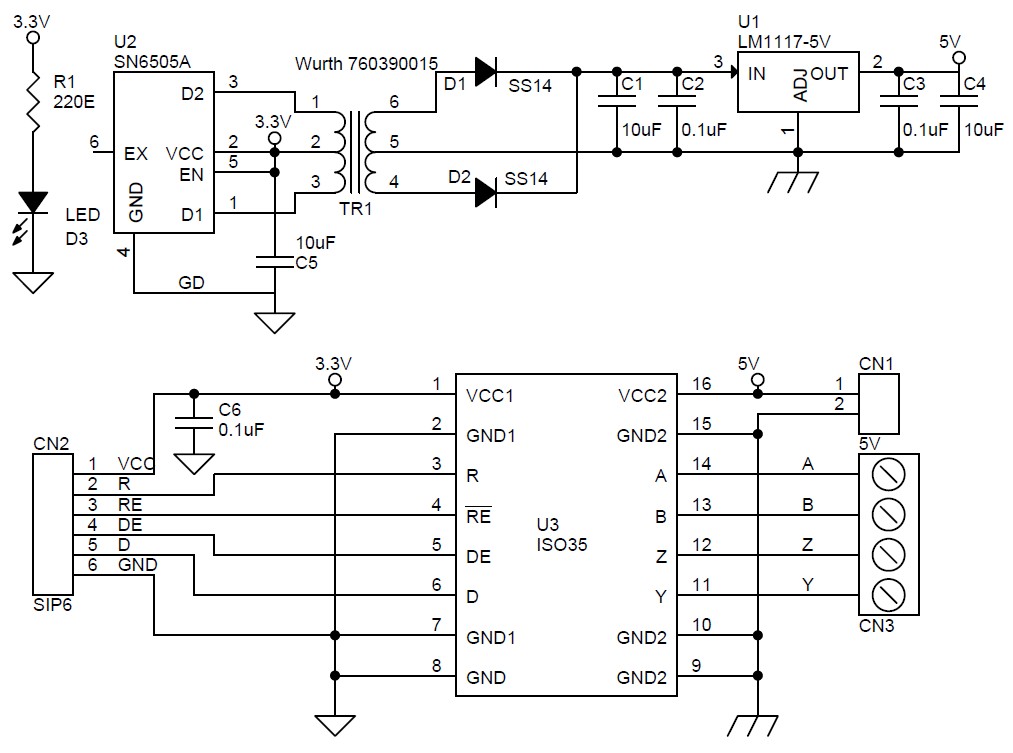Instant Solutions To RS485 Standard In Step by Step Detail
페이지 정보

본문
While RS422 is comparable to RS485, it is limited to unidirectional data traffic, and is terminated only on the end of the line opposite the transmitter. While a multi-drop "type" application has many desirable advantages, RS422 devices cannot be used to construct a truly multi-point network. This type of signal works well in point to point communications at low data transmission rates. Gaining an understanding of different serial communication protocols is important for industrial, commercial, and domestic users to mitigate challenges arising from increasing data transmission requirements. Check building and fire codes for requirements. RS485 meets the requirements for a truly multi-point communications network, and the standard specifies up to 32 drivers and 32 receivers on a single (2-wire) bus. With the introduction of "automatic" repeaters and high-impedance drivers / receivers this "limitation" can be extended to hundreds (or even thousands) of nodes on a network. And, even if the diff-mode impedance is given, the common-mode impedance is never mentioned (on high-performance STP cables, you can hazard a guess - see below). The RS-422 specification recommends 24AWG twisted pair cable with a shunt capacitance of 16 pF per foot and 100 ohm characteristic impedance.
In its simplest form, a pair of converters from RS232 to RS422 (and back again) can be used to form an "RS232 extension cord." Data rates of up to 100K bits / second and distances up to 4000 Ft. RS422 (differential) was designed for greater distances and higher Baud rates than RS232. Therefore the trigger level of the RS232 interface is set relatively high at ±3 Volt. In high quality cable, the conductor losses and the dielectric losses are on the same order of magnitude. In general if you are not connected to a modem the handshaking lines can present a lot of problems if not disabled in software or accounted for in the hardware (loop-back or pulled-up). To solve the "data collision" problem often present in multi-drop networks hardware units (converters, repeaters, micro-processor controls) can be constructed to remain in a receive mode until they are ready to transmit data. Systems of this type (4-wire, half-duplex) are often constructed to avoid "data collision" (bus contention) problems on a multi-drop network (more about solving this problem on a two-wire network in a moment). For existing installations or setups with previously designed modules that are challenging to update, implementing this method may not be feasible.

The R1025-10 gateway is features rich and includes two Ethernet interfaces, three isolated RS485 interfaces, and a variety of optional wireless modules including 4G, LoRa, Zigbee, or Wi-Fi/BLE. MORNSUN as a leading DC to DC converter manufacturer & supplier makes sure that these high-efficiency, excellent performance and low cost DC DC converter power modules with high quality are ideal to fit your application needs. Single master systems (many other communications schemes are available) offer a straight forward and simple means of avoiding "data collisions" in a typical 2-wire, half-duplex, multi-drop system. When used as a converter, RS485 standard the master RS232 port provides bi-directional serial conversion to the 8 RS485 distribution ports. RS232 signals require a common ground between the PC and the associated device. The RS232 signals are represented by voltage levels with respect to a system common (power / logic ground). When communicating at high data rates, or over long distances in real world environments, single-ended methods are often inadequate. The specification allows for data transmission from one transmitter to one receiver at relatively slow data rates (up to 20K bits/second) and short distances (up to 50Ft. @ the maximum data rate). Wiring distances should be limited to one or two hundred feet on async.
For each device interface, the driver and receiver are both connected to these two wires. RS232 signals are represented by voltage levels with respect to system common (power ground). RS232 has numerous handshaking lines (primarily used with modems), and also specifies a communications protocol. With such an implementation of a RS485 network it is necessary that there is error detection implemented in the higher level protocol to detect the data corruption and resend the information at a later time. Any bit protocol such as that from a UART is specifically not included. Odd (O) - the parity bit is set so that the number of "logical ones (1s)" has to be odd. Beyond the obvious traits such as number of conductors and wire gauge, cable specifications include a handful of less intuitive terms. Any number of characters can be sent, and the transmitter will automatically re-trigger with each new character (or in many cases a "bit-oriented" timing scheme is used in conjunction with network biasing for fully automatic operation, including any Baud rate and/or any communications specification, eg.
- 이전글10 Swedish Dog Breeds (With Footage) 24.05.21
- 다음글Meet These 11 Fashionable Hound Dog Breeds 24.05.21
댓글목록
등록된 댓글이 없습니다.



